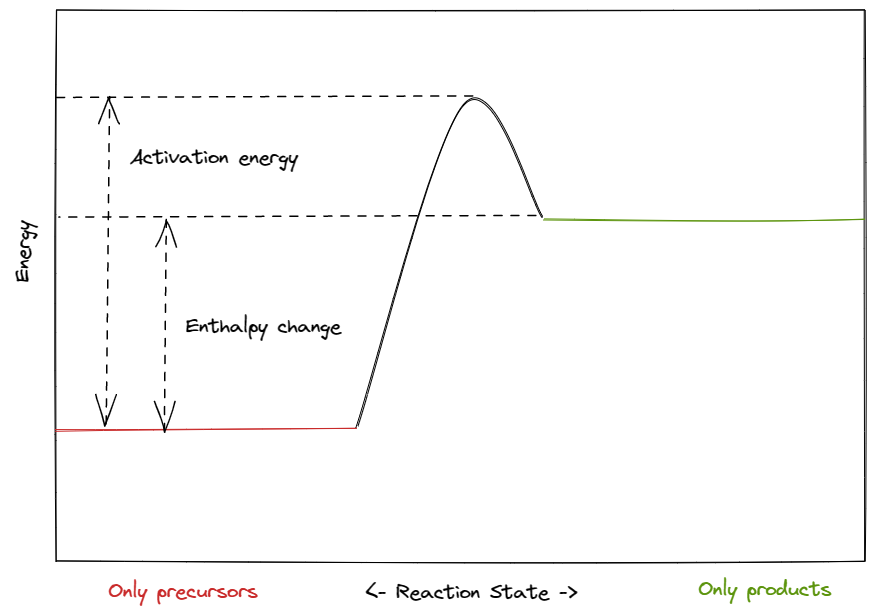Activation Energy
I’ve had a hankering to write a new blog post for a while now, and of course they’ve just been flowing out without issue I’ve been lacking the activation energy to write about things.
This got me thinking about activation energy and how commonly it gets thrown around in non-technical conversation. Intuitively it seems to make sense and sounds neat, “I don’t have the energy to activate this task”. Though, I wonder how many people know of the origin of the term.
It’s not often I get to chemenginerd out on here, so hold on to your butts.
I like to think it’s common knowledge that chemical reactions can release energy, combustion being the most intuitive example. Less common knowledge is that reactions can also take energy from the environment. Known as endothermic reactions, these are more analogous to how we think of doing tasks. Some amount of energy is required to reach some new state and is consumed from the environment (i.e. us doing the thing)
What I’m trying to get to is that before and after a chemical reaction occurs there is a change in energy embodied in the constituents of the reaction (this is mostly stored or released from molecular bonds and is known as enthalpy, but again, not really relevant to this short and succint post).
One might assume that the difference in energy between these states is all what is needed for the reaction to occur, but that is not the case, most reactions have a “hump” in the energy curve which to varying degrees increases the ammount of initial energy required to reach the next state. For your reading pleasure I’ve attached a simple diagram:

The extra energy in this hump is known as the Gibbs free energy (this mostly gets lost to entropy). This extra energy is needed to break up the original molecules as they get transformed into new ones from the reaction that is occuring.
For some reactions this energy hump is huge and almost insurmountable, in these cases catalysts (and their biological equivalent, enzymes) come into play. Through quantum witchcraft (don’t @ me, the post is long enough as is) these compounds don’t get consumed in the reaction, but merely reduce the size of the hump and thus the activation energy required for the products to form. This doesn’t really change how fast the reaction will occur (a common mistake for initiates) but at least makes it possible under most conditions.
So now you know where the term activation energy comes from. Perhaps you can identify the catalyst in your life that helps you get things done!
Tune in next time for either a laptop review (spoilers: it’s good) or brooding ruminations on topic TBD.